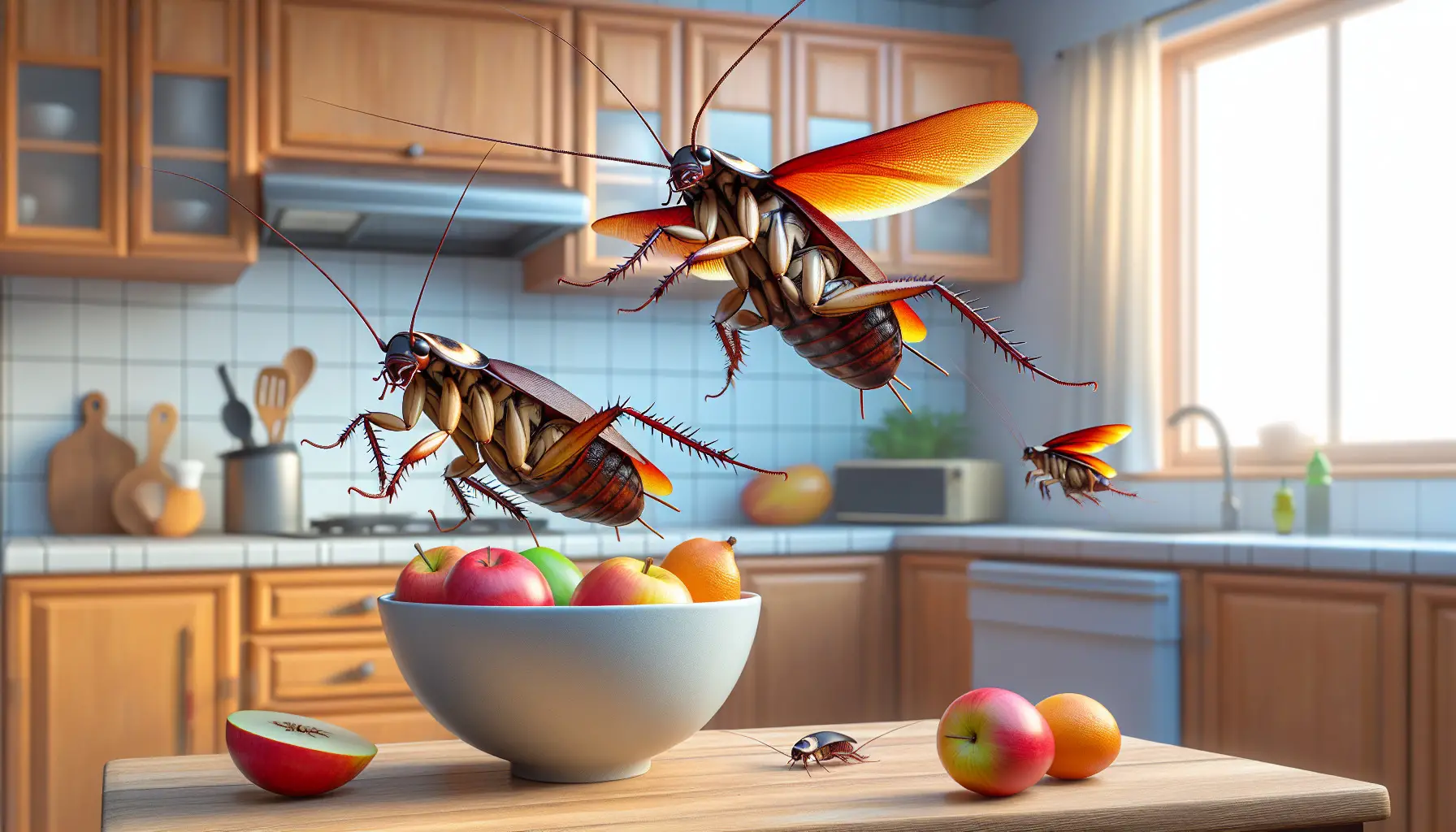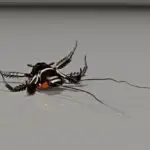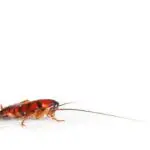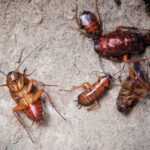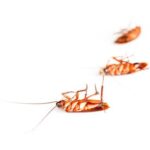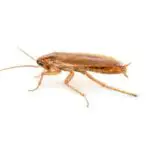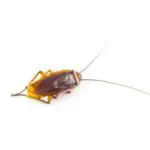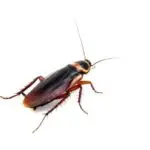Can Roaches Take Flight? Debunking Myths & Facts about Roaches
Introduction: The Flying Capabilities of Roaches
Dive into the common perceptions about roaches and their ability to fly, setting the stage for a detailed discussion on the topic. When we think of creatures that take to the skies, our minds might drift towards birds or even the humble bumblebee. However, a less celebrated aviator inhabits our urban landscapes—the cockroach. It’s a debate that has piqued the curiosity of many: can roaches fly? Certain images come to mind when picturing a cockroach, but few include the image of these critters soaring through the air.
Yet, the truth behind their aerial prowess is as fascinating as it is unexpected. Imagine yourself on a warm evening, enjoying the gentle breeze, when a sizeable shadow swoops by. Is it a misdirected bird, a falling leaf, or could it be a roach on a flight path? This scenario is not as unlikely as some might believe. Indeed, several species of cockroaches have developed wings, leading to some surprising encounters with these unexpected fliers.

The reality is that while many types of cockroaches have wings, not all are capable of powered flight. For example, the well-known American cockroach is known for its occasional flights, especially when temperatures rise and it gets an urge to glide from one location to another in its quest for food or escape. This is reminiscent of the common observation that hot summers bring about more flying roach sightings, a phenomenon noted by experts. Learn more about these cockroach species and their flight abilities.
Clearly, not all roaches are relegated to the ground, and this brings up intriguing questions about why they might take to the air. For those interested in cockroach diversity and evolutionary history, taking a closer look at their flight capabilities offers a fascinating window into the adaptations of these insects. To delve deeper into the vast number of roach species and their unique traits, explore this informative resource on the subject here.
Join us as we continue to unfold the layers of mystery that surround the flying abilities of these ancient insects. Your perception of the humble roach might just elevate to new heights!
The Anatomy of a Roach: Understanding Wings and Flight
Have you ever spotted a cockroach and wondered if those thin appendages on its back could whisk it up into the air and right onto your dinner plate? Well, let’s dive into the fascinating world of cockroach anatomy and set the record straight on their aerial abilities.
Contrary to the nightmares of many, not all cockroaches are adept fliers. In fact, these resilient insects possess a pair of stiff outer wings called tegmina, which serve as a protective shield for their more delicate inner wings. If you have ever had a close encounter with a roach, you may have noticed these tegmina parting slightly – that’s the cockroach revving up its engines, so to speak.
Underneath those tegmina lie the real deal – the inner wings that are membranous and foldable. These are the wings that could potentially support flight. However, not all cockroaches are the same; while some species have mastered the take-off techniques, others flutter their wings just for fun, or simply use them to glide from higher elevations to lower ones – think ‘base jumper’ rather than ‘jet pilot’.
Curious about more cockroach anatomical party tricks? So are we! These insects have perfected their survival strategies through their structure. The wings, for example, are attached to the thorax, where the muscles responsible for movement are housed. Despite their ability to send shivers down a human’s spine, the truth is, not every cockroach can properly fly, and those that can, often prefer not to show off their skills.
Can Those Wings Truly Get Them Airborne?
So, you’re picturing a cockroach with its wings spread wide, attempting to take flight. But what does it really take for these critters to get airborne? It boils down to their muscle strength, wing size, and even the climate they’re in. Some tropical species are more likely to take flight simply due to warmer weather, which makes their muscles more nimble for the task.
And then there’s the discussion of energy cost versus benefit. Why fly when you can run with those spiky legs at impressive speeds? Running is often the roach’s preferred mode of transport – it’s more energy-efficient, after all. For those times when they do take to the skies, it’s typically a short and clumsy affair, often more of a controlled drop than a graceful flight.
Incorporating this intriguing mechanism of nature, researchers are constantly trying to understand the balance between wing structure and flight capability in insects. This exploration may even inspire advancements in robotics and drones – thanks to our not-so-beloved roach models.
Check out this mesmerizing video capturing the flight and jumping behaviors of cockroaches in slow motion. It provides a rare glimpse into the seldom-seen action of roach take-off and is sure to add a new level of respect (or fear) for these ancient survivors:
In essence, while some roaches may have the architecture for flight, not all choose to exploit it. They reserve their wing-flapping for those ‘just in case’ scenarios when a quick getaway is necessary. For cockroaches, flight is not about the freedom of the skies, but a pragmatic tool in their survival kit. And regardless of their flying prowess, roaches will remain fascinating (and somewhat unnerving) creatures to study and understand.
Different Roach Species and Their Flight Proficiency
Ever wondered if the critters creeping in the kitchen at night have a secret power of flight? Well, it’s time we address the hot topic: roaches and their flying abilities—or the lack thereof. Not all roaches are created equal when it comes to taking to the skies!
Let’s start with the American cockroach, one of the largest of its kind spotted in our homes. Despite its size, this species has been known to spread its wings, especially when temperatures rise. Imagine a sizzling summer day where the heat inspires these pests to leap and glide from one surface to another—an unpleasant surprise for anyone nearby.
Moving on to the more globally loathed German cockroach, these smaller pests are the Houdinis of the roach world. They sport wings, yet prefer to scamper rather than soar. That doesn’t mean they can’t fly; it’s just not their go-to mode of transportation. But under distress or favorable wind currents, these roaches might take a brief aerial jaunt to evade capture or find new territories to conquer.
Next, picture the smokybrown cockroach, which sounds like it could be a jazz artist from the ’60s but is indeed another winged wonder. Primarily active at night, these roaches might be found doing a twilight tango in the air, particularly in humid conditions which seem to grant them the gusto for flight.
As we navigate through the roach roster, it’s essential to peek at the fascinating flight capabilities of our six-legged squatters. Through understanding, we might inch closer to coexistence—or better yet, effective management strategies!
Lastly, there’s the brownbanded cockroach, which, despite its aerial apparatus, infrequently engages in flight. These critters are like the risk-averse couch potatoes of the roach realm. They have the equipment but lack the motivation, choosing to remain grounded unless utterly necessary.
So, can roaches really fly? Some can, some might, and others just opt out. It’s all situational, and quite frankly, species-specific. Next time one of these infamous insects scurries across your path, just remember, they might have another trick up their exoskeletal sleeve. And for those who dare to take flight, let’s hope they don’t decide to practice their piloting skills during our dinner parties!

Myth vs. Reality: Can All Roaches Fly?
When it comes to roaches and their flight capabilities, the line between fact and fiction can be as blurry as a bug zipping past your head. It’s a common misconception that all roaches are adept fliers, swooping down like six-legged fighter jets. So, let’s clear the air and talk real facts about these infamous insects.
First off, not all roaches are built for the blue yonder. Picture this: you’re in your kitchen, and out of the corner of your eye, you catch a roach skittering away—and then, it lifts off! Shocking, yes, but not all species of roaches have the same frequent flyer miles. Some have wings that are more decorative than utilitarian, a bit like a penguin in a tuxedo—looks great, but it’s not going to fly.
Now, consider the American cockroach, a species known for occasionally taking flight. These critters use their wings not for long-distance travel but rather for short bursts or gliding from high to low places. It’s less “eagle soaring across the sky” and more “chicken making a break for it.” Their aerial antics might not win any awards, but it’s a clever escape strategy when they need to make a hasty retreat.
Then there’s the truth about tropical roaches—some of these can actually sustain flight and do it with more grace than their urban cousins. Imagine you’re on a vacation, admiring the lush landscape, and a roach cruises by, almost like it’s part of the local aviary. In their native habitats, these roaches use flight to navigate the rainforests and swoop between trees.

Understanding the various flight abilities across different roach species is crucial, and it’s a fascinating aspect of entomology. Realizing that a roach’s wings might be more for show or for occasional use can offer some relief—or, at the very least, prepare you for the unlikely event of a roach taking flight in your presence.
To conclude this high-flying discussion—not really a conclusion, more of a pit stop—to say that all roaches can fly would be a bug-sized fib. While some roaches do have the power of flight, it’s often not their go-to mode of transportation. They might dart across your kitchen floor or glide down from a shelf, but rest assured, they won’t be joining any migration patterns anytime soon. Keep those fly swatters handy, but maybe invest in a good pair of running shoes, too!
Factors Influencing Roach Flight
Ever wondered if those creepy crawlers with the unsettling scuttle could take to the skies? It might seem like pure science fiction, but under the right circumstances, roaches can indeed spread their wings and fly – or at least, glide somewhat. So what flicks the switch on these six-legged aviators? Let’s zoom in on the environmental and biological cues that give these pests wings.
First up is the thermostat of the environment. Temperature plays a huge role in whether a roach will showcase its aerial capabilities. Think of warm conditions as a runway – the hotter it gets, the more likely our uninvited friends are to take off. It’s as if they have a built-in thermometer; once the mercury soars, they’re more tempted to throw caution to the wind, literally. Some roaches, like the common American cockroach, are noticeably more enthusiastic fliers in warmer climates.
The Mating Dance of the Roaches
While heat turns up their propensity to buzz around, there’s another, more romantic trigger for flight in roaches: mating rituals. Let’s set the scene – a male roach catches the pheromone perfume of a female ready to mingle. His instinct isn’t just to scurry over; some gents prefer to swoop in for a grand entrance. This love-fueled airtime isn’t just for show; it’s an integral part of their courtship. The capacity for flight in these scenarios varies among species, but the common theme? Love is in the air…and occasionally, so are roaches.
In a moment, we’ll watch a fascinating showcase of roach flight in action. But before we get there, remember that not all roaches are eager to take flight. Some prefer their feet firmly on the ground, while others don’t have the physical ability to sustain flight. Yet, for those that can, it’s an impressive, albeit unnerving, sight to behold.
Ready to see for yourself? Take a gander at this video, capturing roaches as they unleash their inner pilots.
Understanding these factors is vital because knowing why and when roaches might fly can help in managing and preventing infestations. Keeping areas cool and less hospitable for roach rendezvous might just keep their flight (and the subsequent fright) to a minimum in your home. Like most things in life, preparation and knowledge go a long way—especially when dealing with creatures determined to make your skin crawl. So brace yourself, roaches can fly, but now you’re a bit more equipped to ground them.
Roach Infestations and Flying: Understanding the Risks
When you think of roaches, what comes to mind? Perhaps scurrying pests that dash for cover when the light flips on, right? But here’s something that might just send shivers down your spine: some roaches have wings, and yes, they can use them to fly! Often, when we encounter the thought of flying roaches, it conjures up an almost mythic image – akin to the legendary Pegasus, but far less majestic. We’ve all heard tales of winged warriors in the insect world, but what does the ability to take flight mean in the context of roach infestations?
First thing’s first: not all roaches are created equal. In terms of the aerial acrobatics of these creepy critters, only certain species have the capability to hit the skies. We’re talking about the American cockroach and the smoky brown roach, for instance, which don’t shy away from a little airborne action. Now, imagine the implications: a colony of roaches that’s not just limited to crawling through the nooks and crannies of your home… They’re also winging it through your living space!
This enhanced mobility isn’t just a party trick; it’s a survival tactic. Flying roaches can swiftly invade new territories, making them a formidable foe in the pest control arena. They can zip from one building to the next, potentially spreading their colonies faster than greased lightning. If you’ve ever wondered how a roach problem can escalate so quickly, look no further than those flimsy wings. Pest control strategies have to account for this dimension of agility, as treatments that only target the ground-crawling varieties might fall short against their flight-inclined cousins.
Consider the case of an apartment complex – one unit gets infested, and before you can say “exterminator,” those winged intruders have made their way into multiple homes. It’s like they have their own express lane for colonizing new spaces. And let’s not overlook outdoor roach gatherings. Ever had a BBQ interrupted by a dive-bombing roach? That’s right, these guys can make the leap from outdoor annoyance to indoor pest in the blink of an eye, using their wings to bridge the gap between the wild and your kitchen counter.
Traditional pest control methods, like baits and traps, might not cut it when the pests have the sky on their side. So, what’s the action plan? It’s time to think vertically as well as horizontally – sealing up entry points and employing sprays that target both high and low areas can help ensure those flyers don’t get free rein of your airspace.
Unsettling as they may be, flying roaches have fascinating biological capabilities. To get a closer look at what makes these insects such tenacious survivors, let’s dive into the genetic adaptations of cockroaches with this informative video:
It’s clear that when it comes to roach infestations, being mindful of the winged ones can be the key to keeping your home a roach-free zone. Flying roaches are not just a thing of nightmares – they’re a reality that demands a dynamic approach to pest control. So, the next time you hear the flutter of tiny wings, don’t just dismiss it as a moth. It could very well be a roach, eyeing your home as its next destination.
Preventive Measures to Keep Flying Roaches at Bay
Imagine enjoying a serene evening at home when suddenly, a dark shape buzzes past your ear. Yes, it’s a flying roach, and it has targeted your peaceful abode as its new airstrip. Let’s put an end to their flight plans! Keeping flying roaches away isn’t just about cleanliness; it’s a full-on strategic defense.
Seal Their Entry Points: The Airtight Strategy
First and foremost, think of your home as a fortress. Every tiny crack or crevice is a potential gateway for these winged invaders. Conduct a thorough inspection and seal up any openings with caulk or steel wool, especially around pipes and windows. Remember, roaches can slip through spaces as thin as a quarter! Don’t give them that inch to skitter through.
Cleanliness is Your Shield
Next, let’s talk trash – literally. Garbage and food scraps are like a VIP invite for flying roaches. Make sure your trash cans have tight-fitting lids and give them a regular scrub to erase any lingering odors. Don’t forget to clean those hard-to-reach places, too. A stray crumb under the fridge might as well be a flashing neon sign for a midnight roach rave.
Kitchens and bathrooms are critical battlegrounds. Wipe down surfaces, manage moisture levels, and have a strict policy on pet food – that’s a gourmet treat for roaches if left out overnight. And if you think dirty dishes can wait until morning, think again! A sink piled with plates is the roach equivalent of an all-you-can-eat buffet.
DIY Traps: The Roach Motel
Want a hands-off approach? Set up some DIY traps using sticky pads or bait stations. Place them in strategic locations where roaches love to roam. Think of them as your little spies on the ground, keeping an eye on any roach activity so you can strike where it counts.
Here’s the Buzz: Expert Advice at Your Fingertips
Still need some visual pointers on keeping these pests at bay? Don’t worry; we’ve got you covered with a video that’ll show you how to prevent outdoor roach invasions, ensuring these nuisances stay away from your living space. Watch and learn from the experts on how to shield your home against these unwelcome aviators.
Remember, vigilance is key in the war against flying roaches. Implement these preventive measures, and you’ll reduce the chances of your home becoming a runway for these pesky insects. Just picture it – a future where the only things flying through your home are the gentle breezes of a roach-free existence.
Expert Insight: Pest Control Tips for Flying Roaches
Ever had a roach swoop towards you in a silent, ninja-like maneuver, only to vanish behind the curtains like a disappearing act? Well, my friends, welcome to the world of flying cockroaches. Although it might seem like a scene from a horror movie, flying roaches do exist, and they can be quite a nuisance. But fear not! There are proven strategies and products to manage these unexpected aviators in your home.
Understanding the Foe: Flying Cockroach Behavior
Flying roaches, often mistaken as mutant versions of their land-bound cousins, are simply exhibiting a natural behavior. Certain species, like the American and Smokybrown roaches, have wings that make them capable of flight, especially in warmer climates. Now, just imagine having a calm evening at home when suddenly a squadron of roaches descends from the attic. It’s not the next blockbuster—it’s reality for some!
The Arsenal: Professional Pest Control Techniques
Professional pest control experts use a variety of techniques to combat flying roaches. One effective method is exclusion, where you seal off entry points such as gaps around doors, windows, and utility pipes. It’s like setting up an invisible force field that says, “Not today, roaches!” Another tactic is sanitation, which involves eliminating food sources, reducing moisture, and decluttering your home—a clean house makes a poor playground for pests.
Weapon of Choice: Pest Control Products
When it comes to products, there’s a plethora of options. Insect growth regulators (IGRs) are like the secret agents of pest control, covertly disrupting the roaches’ life cycle. Gel baits are also nifty, acting as a Trojan horse to eliminate the colony from within. And then we have residual sprays, creating a lingering shield on surfaces that’s the equivalent of a “no-fly zone” for roaches.
Let’s not forget about the trusty insect traps, which capture foraging roaches on a sticky surface. Visualize it as the equivalent of roach quicksand—once they step in, there’s no flying away! For the tech-savvy homeowners, ultrasonic repellents might seem like science fiction, emitting frequencies that are a no-go for our winged foes.
The Game Plan for Your Home
So, what’s the strategy for keeping your home roach-free? Think of it like this: start with a solid defense by proofing your home, add a dash of cleanliness for upkeep, and go on the offensive with a combination of gel baits, IGRs, and residual sprays. Together, these approaches create an environment about as popular to roaches as a snowstorm is to sunbathers.
Remember, it’s not about launching an all-out war on roaches. It’s about strategic, informed tactics that make your home a fortress against these unwanted pilots. With the right plan and arsenal, you can bid farewell to any surprise aerial assaults and reclaim your airspace.
FAQ: Frequently Asked Questions
When it comes to roaches and their aeronautic abilities, myths and mysteries abound. Here’s a closer look at the top questions buzzing around about these resilient creatures and their relationship with the skies.
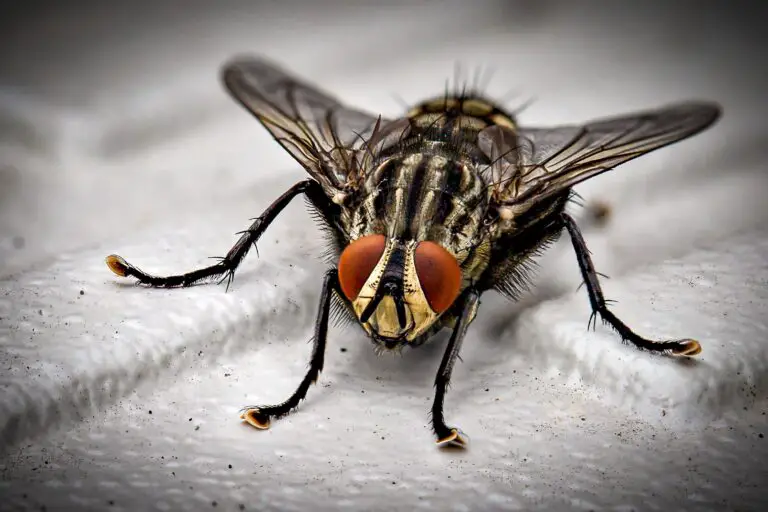
Do All Roaches Have Wings?
It might come as a surprise, but not all cockroaches are created equal when it comes to wings. While most species of roaches have a set of wings tucked away, the truth is, they’re not all cut out for a life aloft. Consider the case of apartment-dwelling roaches who’ve never felt the need to spread their wings—not when scampering is enough to keep them out of harm’s way.
But Can Roaches Actually Fly?
Ever witnessed a cockroach suddenly taking a leap and fluttering across the room? Yes, some roaches can engage in what we might generously call ‘flight.’ However, think less ‘majestic eagle’ and more ‘glorified gliding.’ Their winged escapades are usually more about steering during a fall than soaring through the clouds. It’s less Top Gun, more… a hop, skip, and a jump to the nearest dark corner.
Why Would a Roach Choose to Fly?
Picture the scene: a light goes on, and panic ensues. In moments of danger or disturbance, a roach might decide that it’s time to test out those underused wings. It’s an ‘all hands (and wings) on deck’ situation, a survival instinct kickstarting a clumsy flight towards safety. Some may also take to the air in pursuit of a mate or driven by environmental factors like heat and humidity.
Which Types of Roaches are More Likely to Fly?
In the diverse world of cockroaches, a few stand out as more likely to take to the skies. The American cockroach, for instance, renowned for its size, also has a penchant for the occasional aerial jaunt. Meanwhile, their German counterparts often prefer their feet firmly on the ground, it seems. Local conditions, genetics, and species-specific characteristics all play a role here.
Can Roaches Fly Long Distances?
Don’t expect to find a cockroach frequent flyer program anytime soon. These creatures are not the marathoners of the sky. Their flight is opportunistic, wayward, and short-lived. It’s a means of evasion or exploring their immediate surroundings rather than a way to migrate or travel long distances. In fact, you’re likelier to see one skittering across the kitchen floor than charting a flight path to a new home.
Are Flying Roaches a Cause for Concern?
While a flying roach might momentarily startle you, their aerial abilities are not typically considered more dangerous than their land-based activities. However, it does mean they can spread their territory more easily and potentially find new and creative ways to infiltrate your pantry. Regular pest control and sealing up entry points remain your best defense against these erratic aviators.
How Do I Prevent Roaches from Flying into My House?
Keeping roaches from taking flight into your abode boils down to a few key premises: seal the deal and clean the scene. Fix up any potential entry points like cracks or openings around windows and doors, and ensure food leftovers are a no-go zone. By maintaining a clean, unwelcoming environment for pests, you’ll find your home less appealing to roaches, whether airborne or ground-based.
